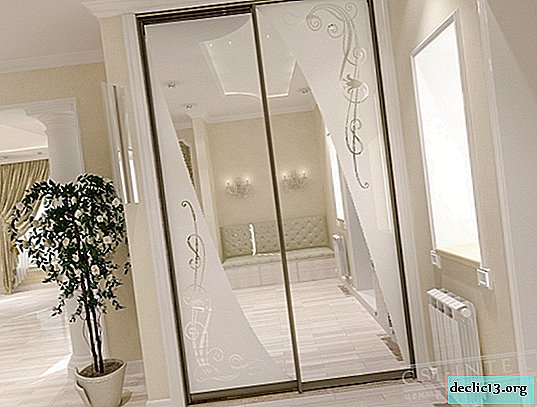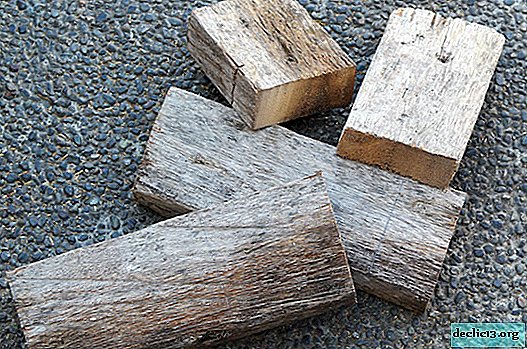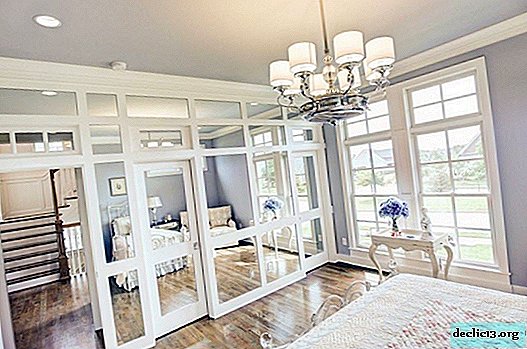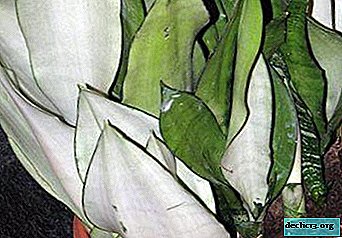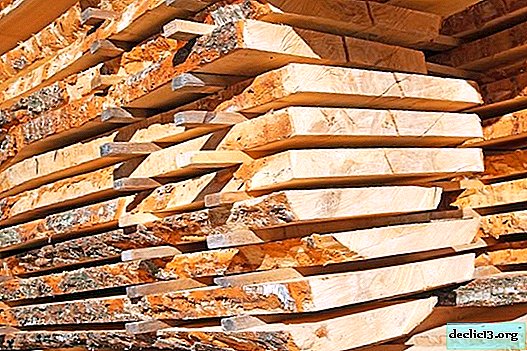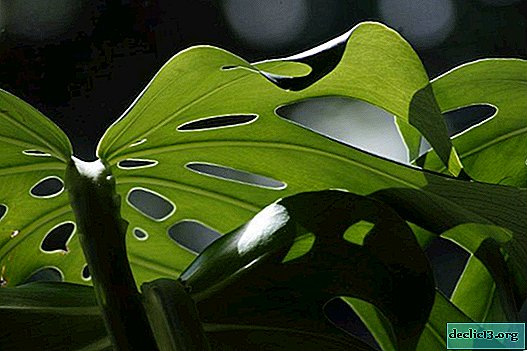Cork flooring
Cork is not only a kind of tool for sealing bottles, but also a finishing material. Since the floor from under the covers of Coca-Cola will certainly be an original, but not very practical solution, today we will discuss the cork floor: installation, production, care and other interesting aspects. So, the bark of cork oak (and this is cork), is home from the Western Mediterranean. It is usually collected manually from old trees (30 years or more). A layer intended for the production of building material, by the way, environmentally friendly, is removed from the cork tree bark. The bark is subjected to grinding, later it is processed, heated in special furnaces and pressed. As a result, the fine particles of the cork tree are connected, thus forming durable compounds from a certain number of air bubbles (suberin). The front side of the cork floor can be made of cork itself or veneer of various types of wood.
Cork, by the way, is the lightest of all natural hard coatings. The main advantages are - sound insulation, thermal insulation, softness, moisture resistance and, most importantly, is not edible for rodents, bugs and pests. Consider an interesting design with this material.
Cork flooring begins with the preparation of the base
There are the following types of bases for cork flooring:
- Plywood. Perfectly sanded sheets of moisture-proof plywood or chipboard are installed on an even cement screed.
- Linoleum. Laying a cork floor on linoleum is possible if the floor under it is in perfect condition - even. Otherwise, linoleum must be dismantled and the floor prepared for laying the cork on the screed. The use of an additional substrate is optional.
- Concrete base or screed. This method of laying a cork floor is very popular. The screed must be well dried and leveled with a grinder or leveling mixture. To ensure the necessary adhesion, it is better to add an amplifier to the leveling mixture. And to ensure waterproofing on the screed, it is necessary to use a substrate with moisture protection (Duplex), or lay a plastic film.
The glue that will be used to lay the adhesive cork must be warm. PVA glue, as well as other water-soluble adhesives, is not recommended - this can lead to spoilage and swelling of the coating. It is better to use special glue for cork (synthetic rubber and polychloroprene are included). He quickly "seizes" and dries.
Gluing cork flooring
Before installing the cork floor, the room must be warmed up to a temperature of 18-22 degrees.
- We mark the premises. Laying the cork floor occurs from the center of the room towards the walls of the room, guided by parallel lines drawn in advance. It is recommended to pre-lay the tile without glue, so to say, "try on." Before laying, be sure to check all the cork floor tiles for matching colors and textures. If there are differences, you need to lay out the tiles so that they are invisible.
- The adhesive is applied both to the floor and to the tile itself using a notched trowel with a tooth pitch of 2 mm. So the material will not lag and will not bend. The glue on the floor should stand for 20-30 minutes, only after that it is necessary to lay the cork (butt, without gaps and press firmly). After the material is tapped with a wooden or rubber mallet (it is better to use a special skating rink if possible). In a well-ventilated area, the glue dries in about two days.
- Whole tiles that will be near the walls must be cut, leaving 3-4 mm gaps between the wall and the coating. The bottom of the door should be cut to the thickness of the cork to fit the cork under it.
- Laying the cork floor is almost complete, now the surface must be sanded and degreased, then coated with wax or protective varnish. The number of layers applied depends on the quality of the material: if the cork is uncoated, the material is applied in 3-4 layers, if the primed cork is in 1-2 layers.
Laying the castle cork floor
An alternative to glue cork flooring is a castle (non-glue) floor. It is presented in the form of cork slabs with locking grooves around the perimeter of cork tiles. Laying a cork floor of a castle type is similar to laying a laminate (it is made sequentially from the edge of one wall to another, row after row). Laying takes place by sequentially connecting the plates according to the "lock in groove" system.
It usually comes with a backing and a protective layer, so it does not require grinding and varnishing. For the greatest protection against moisture, you can use varnish, or use special sealants for joints. In order to visually enlarge the room, it is necessary to lay the short side of the tile parallel to the wall with the door. Cork flooring completed.
Types of cork coatings
- Technical traffic jam;
- Glue;
- Castle (floating).
Technical cork is produced as a substrate under the main floor (laminate, for example). Its purpose is sound insulation and insulation. On the shelves comes in plates, rolls and even granules.
The glue floor is ideal for uneven surfaces (first requires opening with varnish). The adhesive coating is sometimes coated with wax or varnish, as a result of which the material becomes waterproof and is widely used in rooms with high humidity. The adhesive cork floor during installation can be combined with other coatings (parquet, laminate, etc.). In this case, the sills can not be used.
Thanks to the lock (floating) plugs, fast laying is carried out, but on condition of an even base. Floating cork floor is attached "tile to tile" using grooves with joints at the joints. After installation, the floors are varnished. Their service life is half that of adhesive cork floors, and they are also afraid of contact with water.
How to care
The cork is not afraid of the effects of solvents made on the basis of benzene, trichloroethane and ethyl alcohol, so an ordinary wet sponge will do for care. In this case, do not use substances containing aggressive alkalis as detergents. Using an emulsion that will give shine or a special product, you can clean the surface even if it is very dirty. If this is necessary, the contaminated surface can be sanded again and opened with a protective agent - wax or cork varnish.






